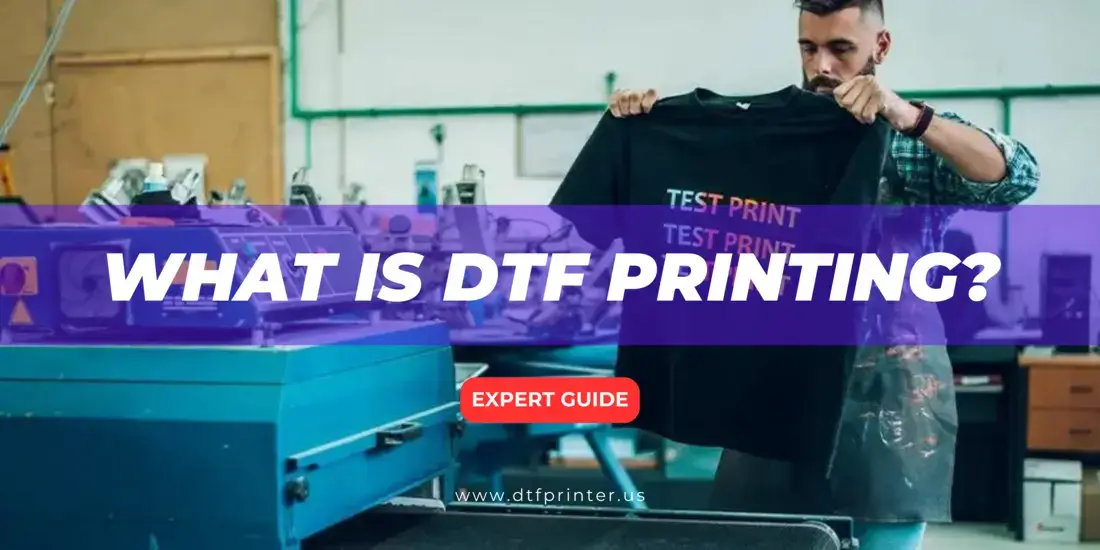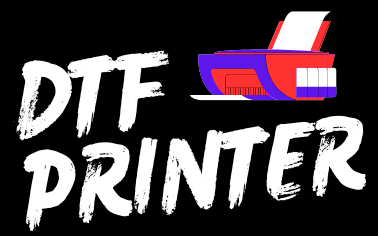
In this era of technology and innovation, people want to print their favourite designs, pictures, logos, and many more on different materials such as t-shirts, key chains, mugs etc. DTF, or direct-to-film printing, is a new technique! It makes everyday printing easier and better as compared to other methods.
If you want to know what is DTF printing? In short, DTF printing is a very easy process. A special printer, ink, transfer film and DTF powder are used in this process. Which altogether bring vivid, breathable, and wash-resistant prints on various fabrics.
Read till the end. We give you complete information on DTF printing, tips and the exact method for successful DTF printing. So, let’s get started!
What is DTF Printing?
DTF(direct-to-film) printing is a new digital technique for customized designs on a personalized substrate. This method prints a design on a unique PET film using DTF ink and adhesive powder. With the help of a heat press machine, this image is transferred to a substrate (fabric, metal, or plastic).

DTF printing has many advantages over sublimation and DTG printing. It has a wider application area on various substrates and requires no pre-treatment for transferring images.
Let’s break down the process of this (DTF) printing.
Materials Required for DTF Printing
Before starting, you need the following materials for DFT printing.
DTF Printer
A printer that is only used for DTF printing
DTF or Curing Powder
A DTF powder works as an adhesive and firmly sticks or binds the ink onto the surface of the substrate.
DTF or PET films
These specialized DTF transfer films keep the DTF INK and help to transfer them onto the substrate easily. The PET films are approximately 0.75mm thick and have a special ink-absorbing coating compared to ordinary transfer films.
DTF Inks
Are specially formulated water-soluble inks for DTF printing. The CMYK and white ink are used for printing. White ink is used on the background over which the colour image is printed.
Substrate
A substrate is a required item such as fabric, metal or plastic on which you want to print.
Heat Transfer Machine
is required to apply a specific amount of pressure and heat to transfer the image onto the substrate.
Curing Oven or Machine
A curing machine is required for evenly melting the DTF powder over the transfer film. Most printers come with a curing oven; you may also purchase it separately according to your needs.
How Does DTF Printing Work? A Step-by-Step Method
DTF printing is a fast printing method as compared to DTG screen printing. It involves various steps, such as preparing the design, printing it onto film, curing the powder, and then printing it onto the substrate.
Here is a step-by-step method for achieving vibrant prints on apparel (light & dark) and other materials.
Preparing the design or artwork
first, prepare your favourite artwork using a DTF printer. Once you create a design, set its height and width according to the substrate size you want to transfer. Then print the image on a special DTF transfer film.
The DTF printing machine creates entirely a coloured print. After that, a white layer completely covered the coloured print. The main purpose of the white layer is that it helps to transfer images even of dark colour fabrics because the white ink or layer acts as a base colour over which the coloured image is printed.
Check out the video below if you are still curious about how DTF prints look on PET film after printing.
Application of DTF powder
After printing, a thin layer of DTF powder is applied at the back of the transfer film.
Curing or heating the DTF powder
The DTF powder is heated in a curing oven for 2-5 minutes at 160-170 degree temperature. This temperature melts the powder and locks the image’s colour firmly.
Once the heating process is complete, allow it to cool down, or you may also use the infrared dryer to dry the powder directly and immediately.
Pre-press the fabric
Before the transfer of print, the pre-press of fabric is for 2-5 minutes inside the heat press is necessary. It removes any wrinkles or humidity from fabric and helps in uniform and even image transfer.
Heat transfer of print
Now place PET transfer film with melted powder onto the fabric. The image is transferred using a heat press machine for up to 15-20 minutes at a temperature of160-170°C.
Peel the film
Allow it to cool down, and peel it off carefully. Now, Post presses the fabric. This will enhance the print’s durability. After that, your apparel or garment is ready to pack.

Management of Troubleshooting Related Issues
During printing, you may experience issues like uneven transfer, colour bleeding and poor adhesion. Here we give some solutions to fix above said issues.
Uneven image transfer
Sometimes, you may experience uneven or blotchy image transfer on the fabric. This may occur due to uneven or excessive layers of powder. To resolve this issue, ensure you evenly spread the image on the film.
Colour bleeding
Sometimes, colour bleeding occurs. To fix this, use minimal powder and remove any moisture from the substrate.
Poor adhesion
Cause the print to peel off or crack. Increasing the temperature under the heat press machine can resolve poor adhesion.
Tips and Tricks for DTF Printing
Follow the following tips and tricks to ensure a complete and beautiful transfer of images without wasting materials and time.
PET Film Quality
Always use good quality transfer film for good results. Before transferring the image, check the physical condition of the PET film and avoid using any damaged films. In addition, to ensure full image transfer, the film must be free from moisture, dust or stretches.
Printing Setting
Properly set the printer setting, i.e. color saturation, resolution, and alignment, according to the size and type of fabric used for DTF printing.
Transfer film proper setting
The proper setting of the film is also crucial during printing. Because if you don’t place film across the printing area, this may lead to the uneven transfer of images.
Pre-pressing
Pre- pressing also play an important role during DTF printing. Pre-pressing helps reduce lines, wrinkles and moisture and provides a smooth surface for a complete image transfer from film to the fabric.
Time and temperature
Maintain uniform and proper temperature for curing the powder. In addition, maintenance of the heat press machine temperature is also important for curing the ink. Improper ink curing may lead to poor ink adhesion to the fabric.
Peeling of film and post-treatment
Do not immediately peel off the film. Give it to rest for 5-10 min and safely remove it while it is still hot. Press the fabric to enhance the durability and life span of the post-print. Post-treatment further enhances the bounding between ink and fabric.
Although DTF printing has its variables and challenges over time, with practice and experience, you can achieve better and more reliable transfer images.
Advantages And Disadvantages of DTF Printing Compared To Other Methods
printing has many advantages in comparison to screen and direct-to-garment or DTG printing most prominent benefits include
Advantages
- Cost-effective
- It can be used for any type and colour of fabric
- Durable and long-lasting prints
- Wash and crack resistant
- Versatile
- Environmental friendly
- Highest production rate
- Produce the highest resolution and vibrant images
Disadvantages
The process is a little bit complex compared to the sublimation process.
Advantages of DTF Printing for Small Business
DTF printing offers huge benefits for small business owners, making it an affordable option for beginners and professionals. The most highlighted benefits include
Suitable for small and large printing jobs
DTF printing dons not require complex setup requirements, and you can start your business with minimal investment for small to large-scale printing jobs.
Versatile media handling
DTF printing allows freedom to work with all kinds of fabric, including polyester blend, cotton,and even leather. So, you can easily handle variable customer needs without worry.
Fast turnaround time
DTF printing offers a faster turnaround time than DTG AND screen printing.
Opportunity for growth
DTF printing can expand on a large scale to cater for wider customers’ needs. It also offers a high-profit margin with minimal investment and effort.
Final thought: what is DTF Printing
At the end of this blog, you better understand what is DTF printing and how it works. In short, DTF printing is a versatile and valuable printing method that provides sleek and resilient designs at a low cost and time.
In addition, it also allows small businesses to expand and deal with different customer needs who are looking for personalized and eye-catching products. Overall, DTF printing is a unique and all-in-one printing method with many advantages, efficiency and quality that make it a popular choice for the textile industry in a short period.

